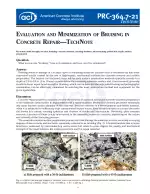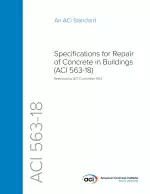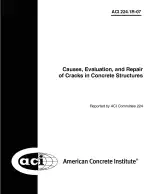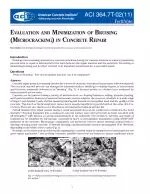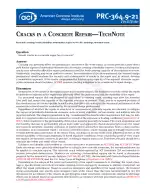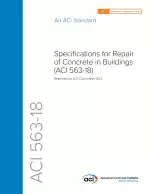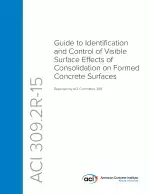ACI PRC-364.7-21 PDF Download
Standard ENEvaluation and Minimization of Bruising in Concrete Repair - TechNote
Also Known As:
ACI PRC-364.7-21 standard provides guidelines on understanding, evaluating, and minimizing bruising in concrete repair processes. Bruising refers to the damage caused to the surface layer of remaining substrate concrete, resulting in fine interconnected cracks due to high-impact and mechanical methods used during concrete removal and surface preparation.
This standard emphasizes the importance of evaluating bruising through techniques such as pulloff testing and petrographic examination. These evaluation methods help identify the extent and depth of the bruised layer, which typically extends around 1/8 to 3/8 inches (3 to 10 mm) or more below the remaining substrate surface. If not properly addressed, the presence of bruising can reduce the bond strength of repair materials.
To minimize bruising, ACI PRC-364.7-21 recommends selecting the most appropriate method and equipment for concrete removal and surface preparation. By carefully considering the application requirements and characteristics of the existing concrete, one can choose methods that minimize the impact and reduce the risk of bruising. Implementing proper techniques and equipment helps maintain the integrity and bond strength of the repaired concrete, leading to a successful and long-lasting repair job.
| Descriptors | bond strength; breaker; bruising; concrete removal; cracking; hammer; microcracking; pulloff test; repair; surface preparation |
| ICS Codes | 25.220.10 - Surface preparation |
| Language(s) | English |
| File Size | 737.3 KB |

